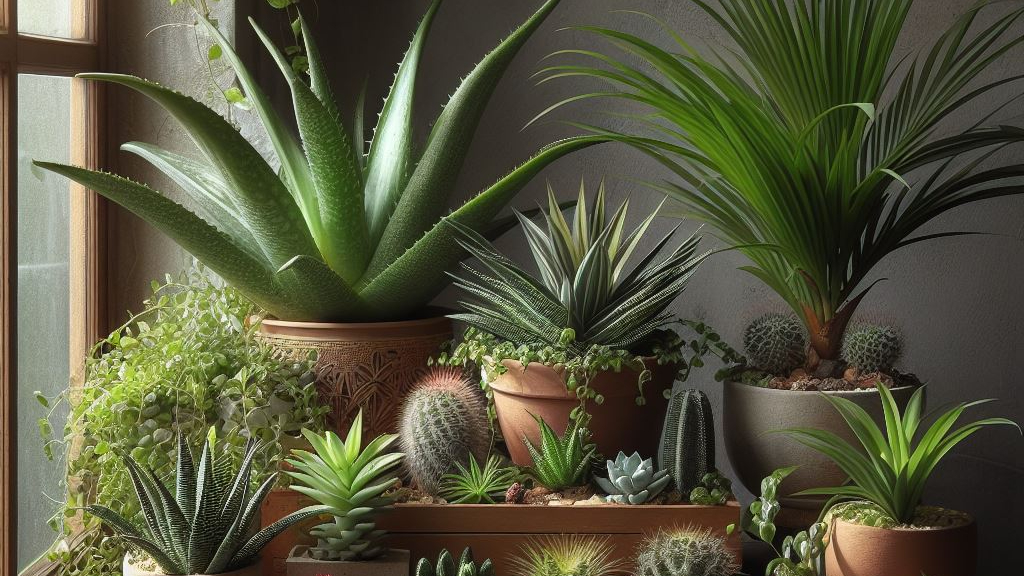Last updated on March 2nd, 2024 at 02:31 am
The rise in popularity of succulents can be credited to their enchanting visual appeal, minimal upkeep demands, and adaptable nature. These hardy plants exhibit a diverse range of shapes, colors, and textures, lending a unique allure to gardens, indoor spaces, and various decorative setups.
Their capacity to thrive in dry conditions and retain water makes them a preferred option for individuals seeking low-maintenance greenery, necessitating less frequent watering compared to many other plant varieties. Moreover, succulents that are safe for cats, by nature, further enhance their appeal as household plants for pet owners concerned about their furry companions’ safety, fostering a secure and inviting environment where both plants and pets can thrive harmoniously.
Moreover, the symbolic association of resilience with succulents, coupled with the broader societal trend of embracing plant parenthood and the impact of social media in showcasing their beauty, has significantly contributed to their widespread popularity as beloved additions to residences and gardens.
Both pet owners and gardening enthusiasts must acknowledge that the succulents are safe for cats. While succulents are attractive due to their distinctive shapes and vivid colors, it is crucial to recognize that not all varieties of succulents are safe for cats.
Certain succulents can be toxic to cats if ingested, posing potential harm. Thus, it becomes essential to understand succulents that are safe for cats to establish a balanced environment where both plants and pets can coexist harmoniously.
Contents
6 Popular Succulents that Are Safe for Cats
Sempervivum
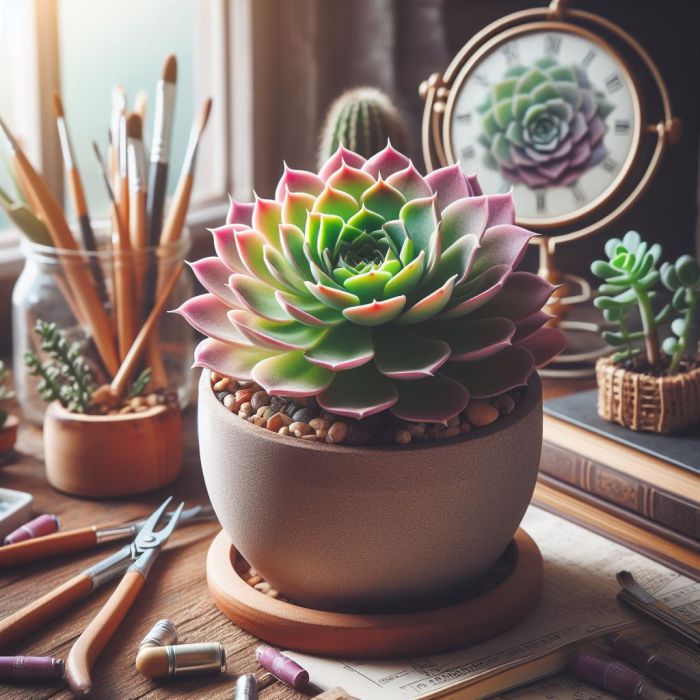
Sempervivum, commonly known as “Hens and Chicks,” is a resilient succulent characterized by rosette-shaped clusters of fleshy leaves. Its name, meaning “always alive,” reflects its hardy nature, thriving in various conditions.
With a low-maintenance appeal, Sempervivum adds a touch of greenery to gardens and containers, making it a popular choice for both novice and experienced plant enthusiasts, particularly among those seeking succulents that are safe for cats. This aspect ensures a harmonious environment for households with feline companions, allowing both plants and pets to coexist seamlessly.
Reason for safety
Sempervivum, commonly referred to as ‘Hens and Chicks,’ exemplifies the category of succulents that are safe for cats due to their non-toxic nature and lack of harmful substances. This succulent’s fleshy leaves are harmless if ingested, making it a pet-friendly addition to homes.
Its resilience and adaptability also mean it can thrive in various conditions, providing a low-maintenance yet aesthetically pleasing option for cat owners. The absence of toxins in Sempervivum ensures that curious cats can explore without the risk of harm, contributing to a safe and harmonious environment where both plants and pets can coexist.
Caring tips
Caring for Sempervivum, or Hens and Chicks, is a joy in simplicity. Thriving in bright sunlight with minimal water needs, these resilient succulents are easy to manage. Whether in pots or the ground, they adapt well to various conditions, showcasing cold hardiness and charming offsets for effortless propagation. With minimal fertilizer requirements, these low-maintenance plants reward caretakers with captivating rosettes and a touch of natural elegance.
Spider plants
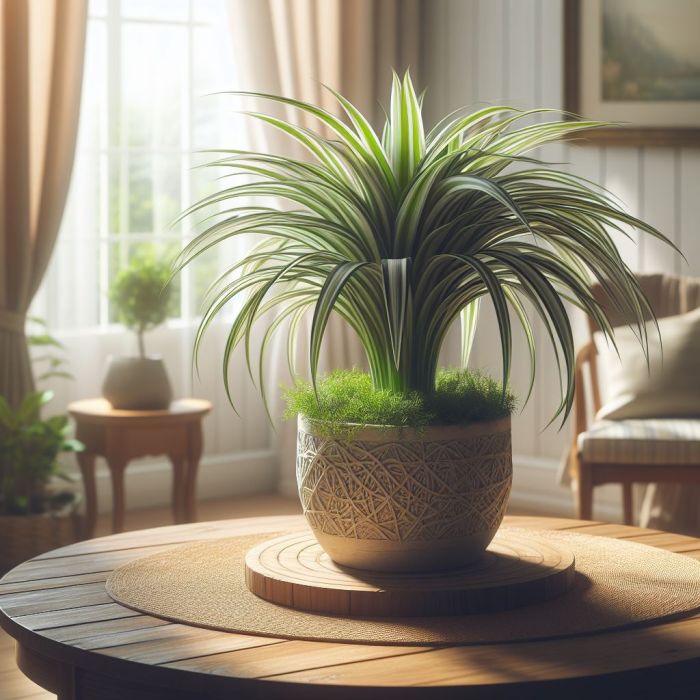
Spider plants, scientifically known as Chlorophytum comosum from the category of succulents that are safe for cats, are characterized by their arching, green, and white striped leaves that resemble spider legs. Known for their air-purifying qualities, these resilient plants are easy to care for, making them popular choices for indoor environments. Spider plants produce delicate, hanging shoots with tiny plantlets at their tips, adding an elegant touch to any space.
Non-Toxic Nature of Spider Plants
Spider plants (Chlorophytum comosum) are considered succulents that are safe for cats as they are non-toxic to feline companions. Unlike some other plants that can be harmful if ingested, spider plants do not contain substances known to be poisonous to cats. This makes them a cat-friendly choice for households where the safety of pets is a priority.
However, while spider plants are generally safe because it is from the succulents that are safe for cats, it’s important to note that individual cats may still have different reactions, and it’s advisable to monitor their behavior around plants to ensure their well-being.
Caring tips
Caring for spider plants is relatively straightforward. Provide them with bright, indirect light, and allow the soil to dry out between waterings, avoiding overwatering. A well-draining potting mix works well for these adaptable plants. Maintain temperatures between 65 to 75 degrees Fahrenheit, protect them from drafts, and consider misting for added humidity.
Feed with a balanced, diluted liquid fertilizer monthly during the growing season. Regularly prune yellowing leaves and propagate the small plantlets for new growth. While spider plants are generally resistant to pests, keep an eye out for spider mites or aphids. With these simple care practices, your spider plant should thrive and add a touch of greenery to your space.
Areca Palm
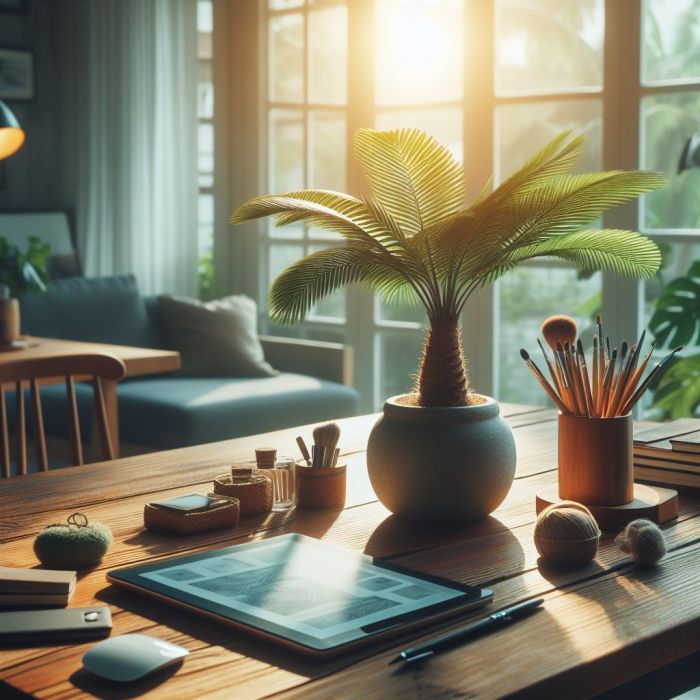
The Areca Palm, scientifically known as Dypsis lutescens, is a popular indoor plant valued for its elegant feathery fronds and vibrant green foliage and falls in the category of succulents that are safe for cats. This low-maintenance tropical palm adds a touch of natural beauty to interiors, thriving in indirect light and contributing to a fresh and inviting atmosphere.
Safer for cats
The Areca Palm (Dypsis lutescens) is distinguished by its cat-friendly quality, being entirely non-toxic. This succulent is considered safe for households with cats, setting it apart from some succulents that can be hazardous if consumed. The Areca Palm’s non-toxic nature ensures minimal risk to cats, allowing them to explore or come into contact with the plant without significant concerns for adverse reactions or harm.
This feature makes the Areca Palm a suitable and secure green choice for homes as it is one of the succulents that are safe for cats, where the safety and well-being of pets, particularly cats, are a top priority.
Caring Tips
Caring for the Areca Palm (Dypsis lutescens) involves paying attention to key factors to ensure its health and vitality. Place the palm in bright, indirect light, shielding it from direct sunlight to prevent leaf damage. Keep the soil consistently moist, allowing the top layer to dry between watering sessions.
Maintain a humid environment, misting the leaves or using a humidity tray, particularly in drier conditions. Provide a warm setting, avoiding exposure to drafts or cold temperatures. Use well-draining potting soil and refresh it every 2-3 years through repotting. During the growing season, fertilize with a balanced liquid fertilizer, adjusting the frequency as seasons change.
Regularly prune yellow or brown fronds to promote a tidy appearance, and be vigilant for pests like spider mites. If needed, propagate the palm through division during repotting, and provide support for tall stems to prevent leaning. Following these tips will help keep the Areca Palm thriving and aesthetically pleasing in your indoor space.
Christmas Cactus
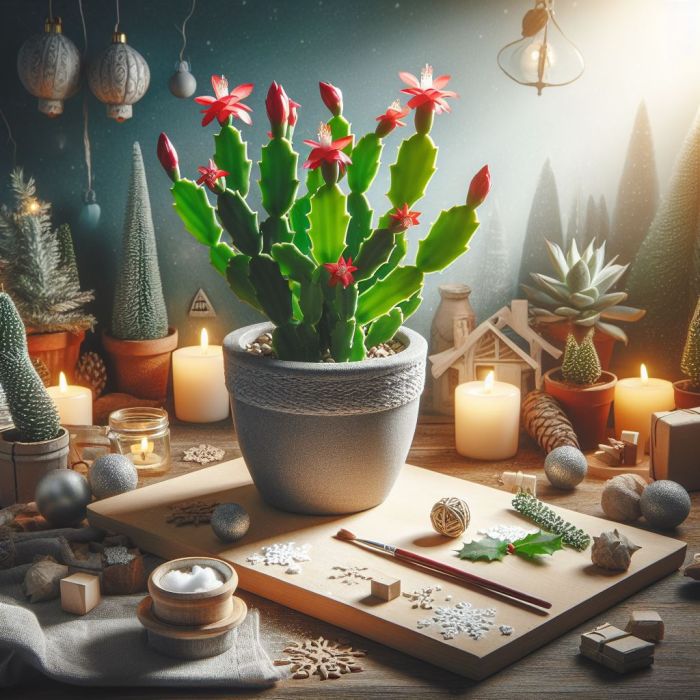
The Christmas Cactus, scientifically known as Schlumbergera, is a charming succulent from the succulents that are safe for cats with flattened, segmented stems and vibrant, pendulous flowers that bloom around the holiday season. Its graceful arching branches create an elegant cascading effect, making it a popular choice for festive decorations and indoor gardens. This succulent thrives in indirect sunlight and well-draining soil, adding a touch of seasonal beauty to any space.
Non-Toxic nature
The Christmas Cactus is a cat-friendly succulent because it is non-toxic and belongs to the succulents that are safe for cats, meaning it won’t harm cats if they happen to nibble on it. Unlike some plants that can be harmful to pets, the Christmas Cactus poses minimal risk, making it a safe choice for households with feline companions.
This succulent adds a festive touch to indoor spaces during the holiday season, and its safety for cats allows pet owners to enjoy its beauty without concerns about potential harm to their furry friends. It’s essential, however, to maintain a watchful eye on pets to ensure they don’t consume large quantities, even of non-toxic plants, to avoid any potential digestive issues.
Caring Tips
Caring for the Christmas Cactus involves providing the right conditions for its optimal growth. This succulent thrives in indirect sunlight, making it suitable for indoor environments with bright, filtered light. When watering, maintaining well-draining soil and allowing the top layer to dry out before rehydrating is crucial. Overwatering can lead to root rot, so it’s essential to strike a balance.
During the growing season in spring and summer, regular fertilization with a balanced, water-soluble fertilizer can enhance its blooming potential.
Additionally, keeping the Christmas Cactus in a slightly cooler environment during the fall encourages the development of flower buds for its festive display. Pruning after blooming can help maintain its shape and promote healthier growth in the long run.
Overall, a consistent and mindful approach to lighting, watering, and temperature conditions contributes to a thriving and beautiful Christmas Cactus.
Haworthia
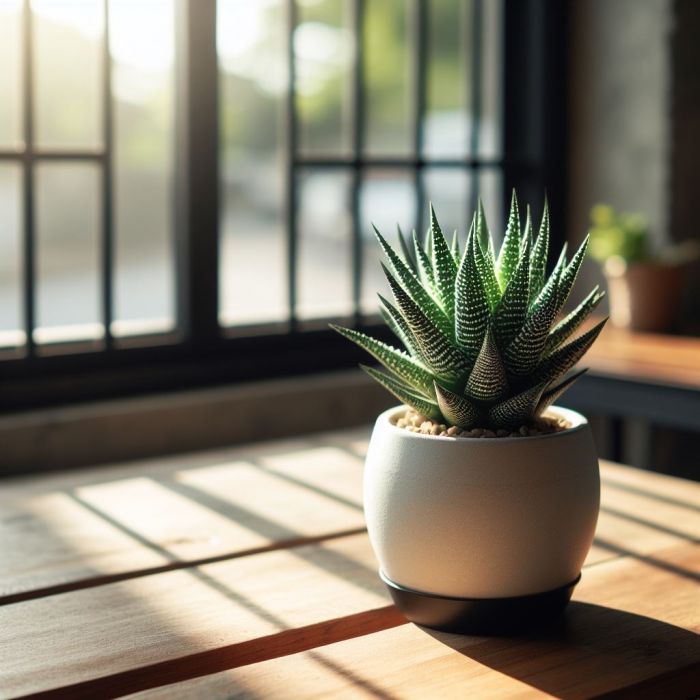
Haworthia, a small and captivating succulent, is known for its rosette-shaped clusters of thick, fleshy leaves and belongs to the succulents that are safe for cats. With a striking appearance resembling miniature aloe plants, Haworthia adds a touch of elegance to any space. Its low-maintenance nature and ability to thrive in indirect sunlight make it an ideal choice for both novice and experienced plant enthusiasts.
Non-Toxic Nature for cats
Haworthia stands out as a chic and cat-friendly succulent, boasting rosette-shaped clusters of lush, thick leaves that mimic the charm of miniature aloe plants. What makes it especially appealing for cat owners is its safety profile – Haworthia is non-toxic to cats, ensuring a worry-free environment where feline friends can coexist harmoniously with this stylish succulent. With its captivating aesthetics and pet-safe features, Haworthia adds not only beauty but also peace of mind to any plant enthusiast’s collection because it is from succulents that are safe for cats.
Caring Tips
Caring for Haworthia involves a few simple yet essential tips to ensure its thriving presence in your home. This charming succulent prefers bright, indirect sunlight, making it ideal for placement near windows with filtered light. Allow the soil to dry out between watering sessions, ensuring that excess water drains properly to prevent root rot.
Use a well-draining succulent mix to provide the right balance of moisture for this resilient plant. Haworthia appreciates a comfortable indoor temperature range and is well-suited for typical room conditions. During the growing season, from spring to fall, a mild succulent fertilizer applied every 2-4 weeks can support its health.
Lastly, keep an eye on the succulent’s growth patterns and, if needed, repot it every couple of years to refresh the soil and provide ample space for its charming rosettes to flourish. With these care tips, Haworthia can thrive and continue to enhance your living space with its unique allure.
Aloe Vera
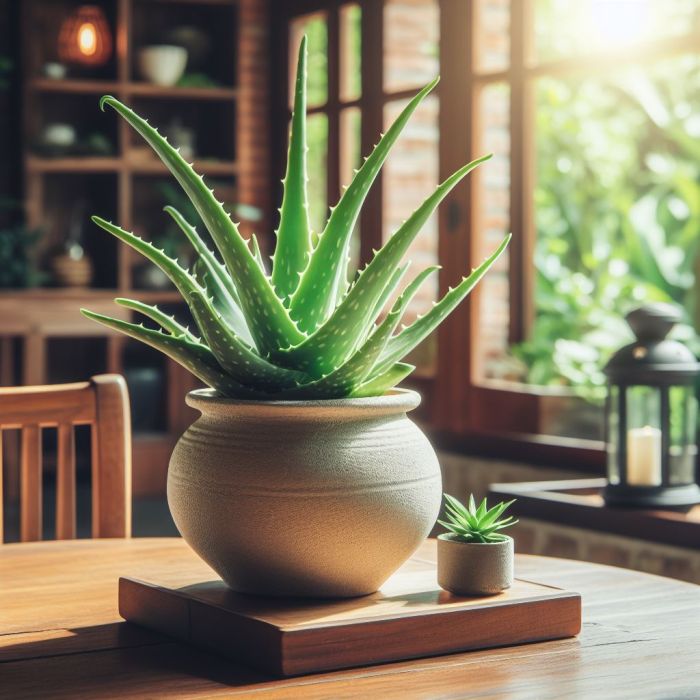
Aloe Vera, known for its fleshy green leaves and soothing gel, is a versatile succulent prized for its medicinal properties as well as one of the succulents that are safe for cats. With a distinctive rosette shape, this low-maintenance plant is celebrated for its ability to thrive in various climates and is commonly used for skin care and healing purposes.
Non-Toxic nature
Aloe Vera is generally considered non-toxic for cats because it comes from succulents that are safe for cats. The gel inside the leaves, which is commonly used for various skin-related purposes, is not known to be harmful to cats when applied topically.
However, it’s essential to note that while Aloe Vera is generally safe, the latex found in the outer leaf skin may have a laxative effect and could potentially cause digestive discomfort for cats if ingested in significant quantities.
To ensure the well-being of your feline companion, it’s advisable to keep any Aloe Vera plants in an area that is not easily accessible to your cat and monitor their behavior if they come into contact with the plant. If you have concerns or if your cat exhibits any unusual symptoms after contact with Aloe Vera, consulting with a veterinarian is recommended.
Caring Tips
Caring for Aloe Vera involves a few simple yet crucial tips to ensure its optimal growth and health. Aloe Vera thrives in well-draining soil, so it’s essential to use a cactus or succulent mix to prevent overwatering and root rot. Place the plant in a location with bright, indirect sunlight, as direct sun for extended periods may cause leaf discoloration.
Allow the soil to dry out completely between watering, as Aloe Vera is highly resilient and can withstand drought conditions. When watering, ensure that excess water drains out, and the plant is not sitting in standing water. During the growing season (spring and summer), a balanced succulent fertilizer can be applied every 4-6 weeks to support its growth.
Additionally, prune the outer leaves as needed and remove any dead or withered parts to encourage new growth. Regularly inspect the plant for pests, such as aphids or mealybugs, and address any issues promptly. With these care tips, Aloe Vera can flourish as a beautiful and beneficial addition to your indoor or outdoor space.
Introducing succulent to a cat-friendly space
Creating a cat-friendly space with succulents demands a careful balance between vibrant greenery and feline safety. Opt for enchanting cat-friendly succulents like resilient Sempervivum, graceful Spider Plant, or elegant Areca Palm to ensure harmonious coexistence.
Enhance their beauty by placing them strategically on elevated spots like hanging planters or shelves, creating a captivating display while safeguarding against curious cats. Watch your cat closely upon introduction, appreciating their curiosity while ensuring they steer clear of nibbling on these safe succulent treasures.
If needed, use gentle deterrents like double-sided tape or natural repellents. Offer alternatives such as cat grass and interactive toys for balanced exploration. With regular care, these succulents that are safe for cats transform your space into a haven where aesthetics and feline joy blend seamlessly, nurturing both plants and companionship.
FAQs
Why are succulents gaining popularity?
Succulents are gaining popularity due to their enchanting visual appeal, minimal upkeep demands, and adaptable nature. Their diverse shapes, colors, and textures make them a favorite for gardens, indoor spaces, and various decorative setups.
What are some general care tips for succulents that are safe for cats?
General care tips include providing suitable lighting, using well-draining soil, allowing the soil to dry between waterings, and addressing any issues promptly. Each succulent may have specific care requirements, so it’s essential to tailor care to the needs of the individual plant.
Are all succulents safe for cats?
Not all succulents are safe for cats. While some, like Sempervivum and Spider Plants, are non-toxic, others may pose a risk if ingested. It’s crucial to choose succulents that are safe for cats to ensure a safe environment for your pets.
What makes Sempervivum a safe succulent for cats?
Sempervivum, or “Hens and Chicks,” is safe for cats as it is non-toxic and lacks harmful substances. Its fleshy leaves are harmless if ingested, making it a pet-friendly choice with resilience and adaptability.
Is Aloe Vera safe for cats?
Aloe Vera is generally considered non-toxic for cats. While the gel inside the leaves is safe when applied topically, it’s important to keep the latex found in the outer leaf skin away from cats, as it may have a laxative effect if ingested.
The growing popularity of succulents owes much to their charm and easy care. What’s more, some succulents, like Sempervivum, Spider Plants, Areca Palms, Christmas Cacti, Haworthia, and Aloe Vera, are safe for cats. This safety factor makes them ideal choices for homes where cats roam freely. These plants bring beauty to spaces while ensuring our feline friends stay safe, allowing for a perfect blend of greenery and pet-friendly living. By opting for succulents that are safe for cats, we create environments where both plants and pets happily coexist, adding joy and tranquility to our homes.

